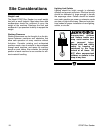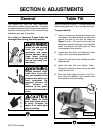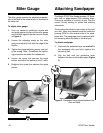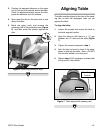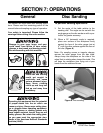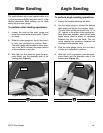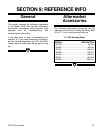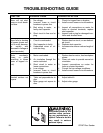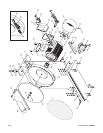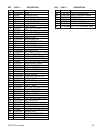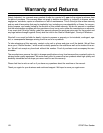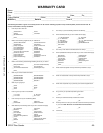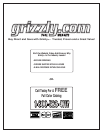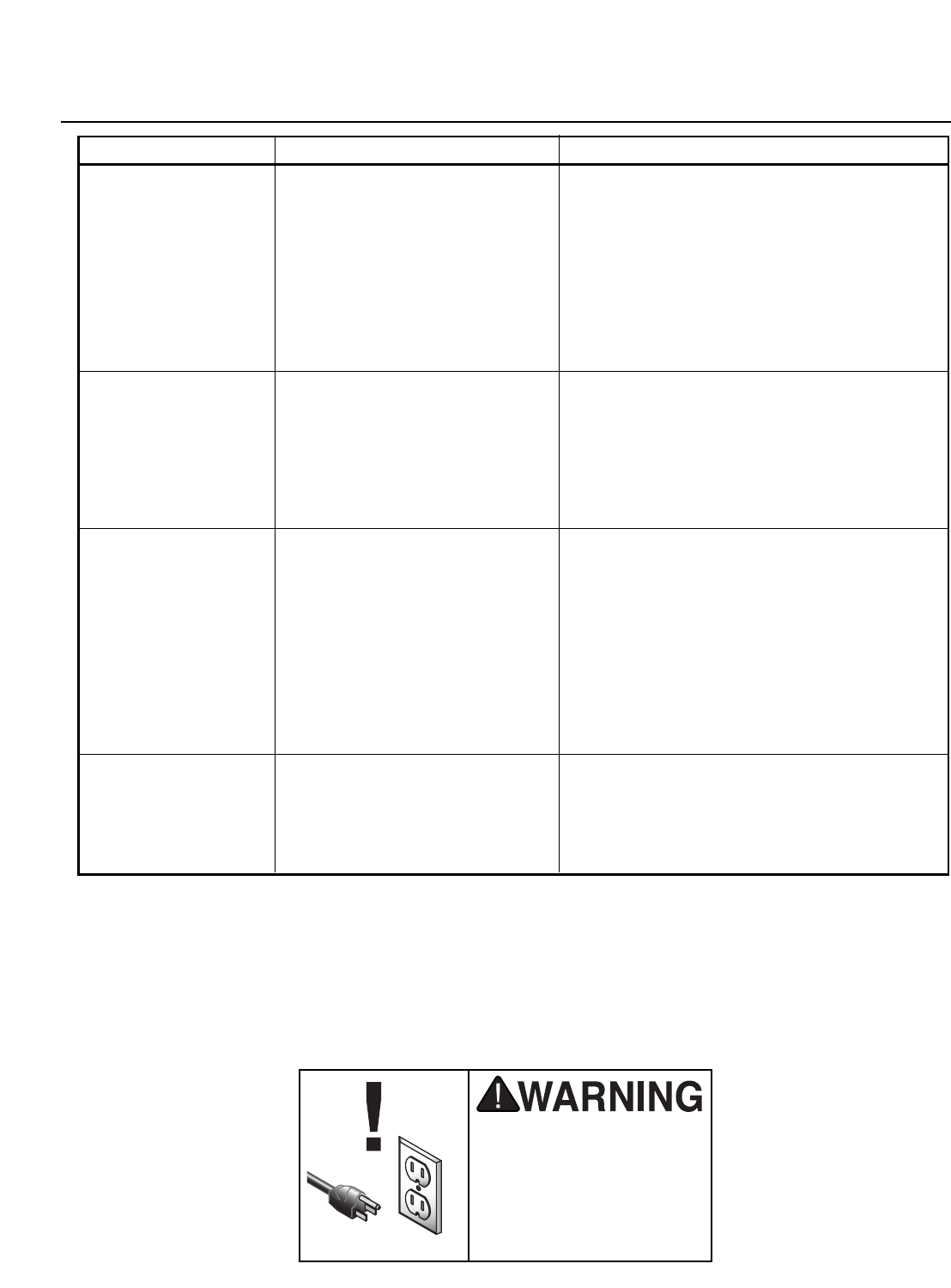
-18-
G7297 Disc Sander
Disconnect power to the
machine when perform-
ing any maintenance or
repairs. Failure to do this
may result in serious
personal injury.
SYMPTOM
Motor will not start;
fuses or circuit break-
ers blow.
Motor fails to develop
full power (power out-
put of motor decreas-
es rapidly with
decrease in voltage at
motor terminals).
Motor overheats,
slows, or stalls
(resulting in blown
fuses or tripped cir-
cuit).
Sanded surface not
square.
POSSIBLE CAUSE
1. No voltage.
2. Incorrect fuses or circuit
breakers in power line.
3. Bad wiring in motor, or
faulty start capacitor.
4. Short circuit in line cord or
plug.
1. Circuit is overloaded.
2. Start capacitor is faulty
3. Undersized wires or cir-
cuits too long.
1. Motor overloaded.
2. Air circulation through the
motor restricted.
3. Short circuit in motor or
loose connections.
4. Low voltage.
5. Incorrect fuses or circuit
breakers in power line.
1. Table not perpendicular to
disc.
2. Miter gauge not square to
disc.
CORRECTIVE ACTION
1. Check for tripped fuse or breaker.
2. Install correct fuses or circuit breakers.
3. Inspect all connections on motor for
loose or shorted terminals, replace
start capacitor.
4. Inspect cord or plug for damaged insu-
lation and shorted wires.
1. Reduce load on circuit, or use dedicat-
ed circuit.
2. Replace start capacitor.
3. Increase wire sizes or reduce length of
wire.
1. Reduce load on motor, feed workpiece
slower
2. Clean out motor to provide normal air
circulation.
3. Inspect connections on motor for
loose or shorted terminals.
4 Correct the low voltage conditions.
5. Install correct fuses or circuit breakers.
1. Adjust table tilt.
2. Adjust miter gauge.
TROUBLESHOOTING GUIDE



